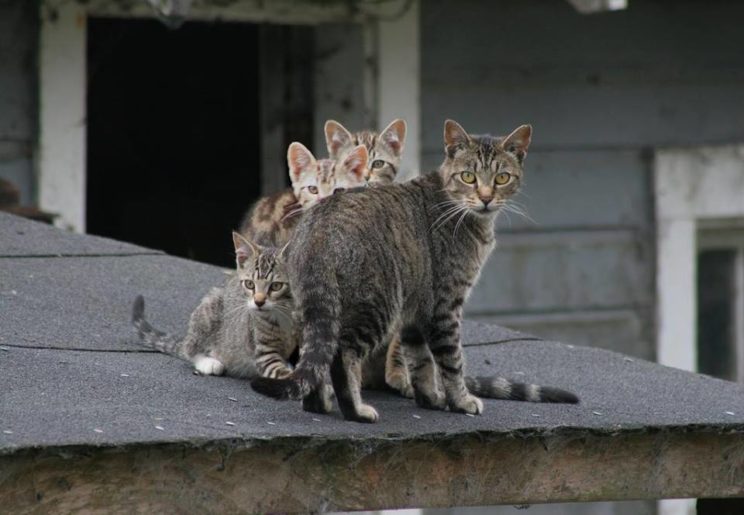Part II of a series of 2018 animal news in review.

Early in the new year, I’ll be doing a radio interview highlighting the biggest shelter animal stories and trends of 2018 and what the future holds for 2019. I’ll be talking about community cat programs and pitty parties, and a whole lot more. Details coming soon:
Earlier, I posted that 2018 marked a tipping point when it comes to dogs we classify as “pit bulls” — the era of breed discrimination is coming to an end. The same can be said of community cats in the U.S.
In addition to the rising number of communities and community shelters embracing community cat sterilization, instead of killing; those that have been practicing it for years have seen dramatic results. Alachua County, FL, for example, reported a 97% decline in cat killing — from 3,631 to 98. And in Olean, NY, city officials are conscripting the entire population to become community cat caregivers: “Residents will be ‘encouraged to participate in TNVR programs.'” City officials originally considered requiring a permit to trap, sterilize, and rerelease cats, but “chose instead to leave it open to all.” This follows the elimination of cat control, which had resulted in the round up and killing of community cats.
But the State of Delaware went even further. A new law mandates that “visibly healthy cats admitted to a shelter, not placed for adoption, and lacking discernible owner identification, are sterilized, vaccinated against rabies, ear-tipped, and returned to a safe location where they were found or, if necessary, appropriately relocated.” While it continues to prefer adoption, it amended the Delaware Companion Animal Protection Act (CAPA) — legislation modeled after the law written by my organization, the No Kill Advocacy Center — to prohibit killing healthy community cats when they can be returned to their habitats. Since CAPA passed, the killing of cats in Delaware has declined by 90%. Under this new amendment, that decline is expected to continue going up. The law also added legal protections for those who care for community cats and legal protections for the cats, too, making it a felony to cause them harm. It joins Muncie, IN, which passed CAPA and banned the killing of healthy and treatable community cats a year earlier.
This is all good news. While cats as a whole face a roughly 45% chance of being killed in American shelters (in some communities it is much, much higher), when those cats are not social with people, the percentage becomes nearly 100% at shelters in communities without a community cat program. Sterilization and release — a core program of the No Kill Equation — provides community cats who enter shelters a vital alternative to killing.
There was a time, not so long ago, when dogs classified as “pit bulls” and “feral” cats were the most at risk animals in U.S. pounds. That has dramatically changed in many communities, with dozens reporting placement rates as high as 99% for each. 2018 added to those numbers.
————-
Have a comment? Join the discussion by clicking here